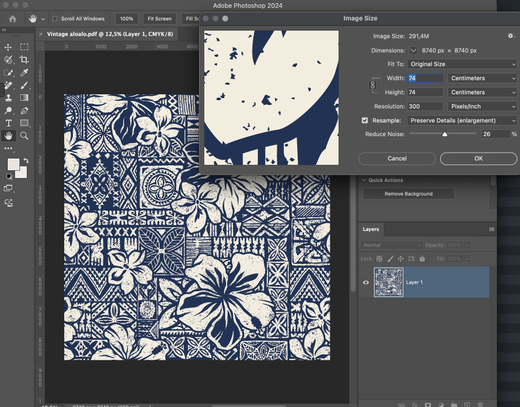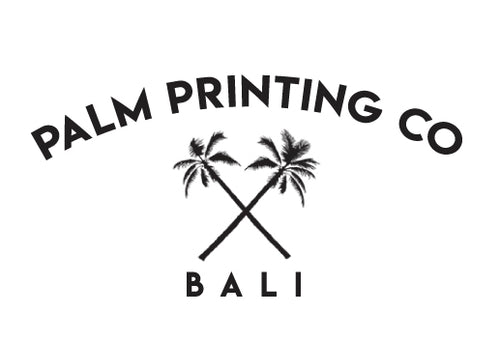
How to Best Prepare Artwork Files for Digital Fabric Printing
Digital printing offers endless possibilities for creating vibrant, high-quality designs on fabric. To achieve the best results, preparing your artwork files correctly is crucial. Each step plays a significant role in the final output, from ensuring seamless repeats to checking resolution. Here’s a comprehensive guide on how to get your files ready for digital printing.
Why Proper Artwork Preparation Matters
Preparing artwork files correctly ensures your designs print accurately and beautifully. It helps avoid common issues such as pixelation, misalignment, or poor colour quality, saving time and reprint costs.
Key Steps to Prepare Artwork for Digital Printing
1. Check for Seamless or Repeating Patterns
Seamless repeats are essential for designs that need to flow continuously without visible breaks. To ensure your pattern is seamless:
How to Check for Seamless Repeats
- Tile the Artwork: Use graphic design software like Adobe Illustrator or Photoshop to tile your design and verify that edges align perfectly.
- Test the Repeat: Print a small swatch of the pattern to confirm that it looks cohesive. A strike-off sample is available at Palm Printing Co.
- Use Smart Guides: Utilise tools like grids or smart guides in your software to align elements precisely.
2. Verify the Sizing of Your Artwork
Ensuring the correct size of your design is critical for maintaining proportions and avoiding distortions. Here’s how to check:
How to Check Artwork Sizing
- Match the Design Size to the Final Output: Set the artwork dimensions to match the intended print size. For example, if you’re printing a 25x25-centimetre pattern, your file size should reflect this.
- Consider Bleed Areas: For panel or 'placement' artwork, add a bleed (typically 3-5 millimetres) to visually show the cut line.
- Scale with Intention: Use vector graphics whenever possible, as they scale without losing quality. For raster images, avoid enlarging beyond the original resolution.
3. Ensure High Resolution
Resolution is a critical factor in achieving crisp and detailed prints. Follow these guidelines:
High-Resolution Checklist
- Set the Resolution to 150 DPI: For fabric printing, 150 dots per inch is the industry standard to ensure clarity. 300 DPI is even better.
- Avoid Low-Resolution Images: Check your file at 100% zoom to detect pixelation.
- Remember: Resolution Cannot Be Improved: If your original image is low-resolution, it cannot be enhanced simply by increasing the DPI in software. Always start with a high-quality source file.
- Choose the Right File Format: Save your designs as high-quality formats such as TIFF, PSD, or PDF to retain detail.
File Formats and Colour Profiles
4. Select the Appropriate File Format
Different printers may require specific file formats. Common formats include:
Best File Formats for Printing
- TIFF: Preserves layers and detail, ideal for digital printing.
- PSD: Suitable for designs with complex layers.
- PDF: Universal and retains high quality.
5. Use the Correct Colour Profile
Colour profiles ensure that the colours in your design match the final print. For fabric printing:
Colour Profile Tips
- Select RGB Mode: For our software, please ensure you select RGB format. Our RIP software will translate colours better than the CMYK format.
- Test Colours: Print a test swatch to verify the colour output. Strike-off or saturation test samples are available at Palm Printing Co.
- Experiment with Variations: Create and test several colour variations of your artwork for complex designs. This allows you to compare results and ensure you achieve the desired tone and vibrancy.
Final Checklist Before Submission
- Review the Artwork: Double-check for seamless repeats, correct sizing, and resolution.
- Flatten Layers: If submitting in formats like TIFF, flatten unnecessary layers to avoid errors.
- Use Unique Names for Each Artwork & Colour: Avoid mistakes by giving each artwork a unique name. For revisions, include the iteration/version in the name.
- Provide Clear Instructions: Include notes about scaling, placement, or specific requirements for the printer.
Conclusion
Properly preparing your artwork for digital printing is essential to achieve high-quality results. By ensuring seamless repeats, accurate sizing, and high resolution, you can avoid common issues and bring your creative vision to life. Follow these steps, and you’ll be well on your way to a smoother printing process with fewer nasty surprises!


